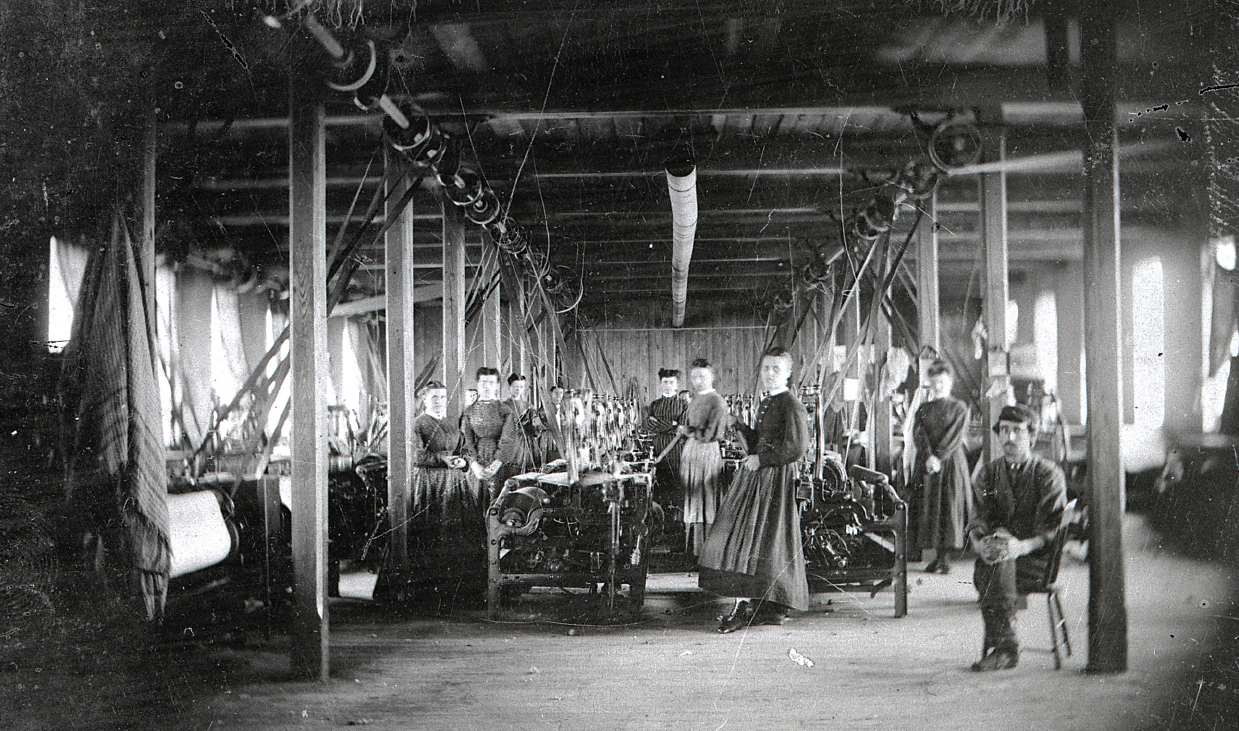A History of World Societies:
Printed Page 701
A History of World Societies Value
Edition: Printed Page 710
Chapter Chronology
Working Families and Children
By the 1790s the early labor pattern was rapidly changing. The use of pauper apprentices was in decline, and in 1802 it was forbidden by Parliament. Many more textile factories were being built, mainly in urban areas, where they could use steam power rather than waterpower and attract a workforce more easily than in the countryside. People came from near and far to work in the cities, as factory workers and as laborers, builders, and domestic servants. Collectively, these wage laborers came to be known as the “working class,” a term first used in the late 1830s.
In some cases, workers accommodated to the system by carrying over familiar working traditions. Some came to the mills and the mines as family units, as they had worked on farms and in the putting-out system. The mill or mine owner bargained with the head of the family and paid him or her for the work of the whole family. In cotton mills, children worked for their mothers or fathers, collecting scraps and “piecing” broken threads together. In mines, children sorted coal and worked the ventilation equipment. Their mothers hauled coal in the tunnels below the surface, while their fathers hewed with pick and shovel at the face of the seam.
Ties of kinship were particularly important for newcomers, who often traveled great distances to find work. Many urban workers in Great Britain were from Ireland. They were forced out of rural Ireland by population growth and deteriorating economic conditions from 1817. Their numbers increased dramatically during the desperate years of the potato famine, from 1845 to 1851. As early as 1824 most of the workers in the Glasgow cotton mills were Irish; in 1851 one-sixth of the population of Liverpool was Irish. Like many other immigrant groups held together by ethnic and religious ties, the Irish worked together, formed their own neighborhoods, and maintained their cultural traditions.

Workers at a U.S. Mill Female workers at a U.S. cotton mill in 1890 take a break from operating belt-driven weaving machines to pose for this photograph, accompanied by their male supervisor. The first textile mills, established in the 1820s in Massachusetts, employed local farm girls. As competition intensified, conditions deteriorated and the mills increasingly relied on immigrant women who had few alternatives to the long hours, noise, and dangers of factory work. By 1900 more than 1 million women worked in factories in the United States. (Courtesy of George Eastman House, International Museum of Photography and Film, accession number 1966:0039:0013)
In the early decades of the nineteenth century, however, technical changes made it less and less likely that workers could continue to labor in family groups. As control and discipline passed into the hands of impersonal managers and overseers, adult workers began to protest against inhuman conditions on behalf of their children. Some enlightened employers and social reformers in Parliament agreed that more humane standards were necessary, and they used widely circulated parliamentary reports to influence public opinion. For example, Robert Owen (1771–1858), a successful textile manufacturer, testified in 1816 before an investigating committee on the basis of his experience. He argued that employing children under ten years of age as factory workers was “injurious to the children, and not beneficial to the proprietors.”5 Workers also provided graphic testimony at such hearings as the reformers pressed Parliament to pass corrective laws.
These efforts resulted in a series of British Factory Acts from 1802 to 1833 that progressively limited the workday of child laborers and set minimum hygiene and safety requirements. The Factory Act of 1833 installed a system of full-time professional inspectors to enforce the provisions of previous acts. Children between ages nine and thirteen could work a maximum of eight hours per day, not including two hours for education. Teenagers aged fourteen to eighteen could work up to twelve hours, while those under nine were banned from employment. The Factory Acts constituted significant progress in preventing the exploitation of children. One unintended drawback of restrictions on child labor, however, was that they broke the pattern of whole families working together in the factory, because efficiency required standardized shifts for all workers. After 1833 the number of children employed in industry declined rapidly.
